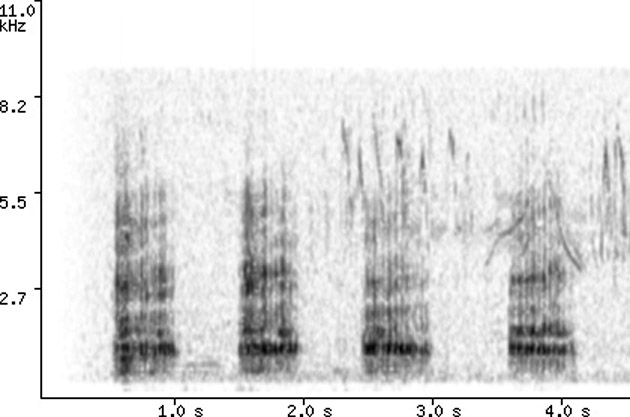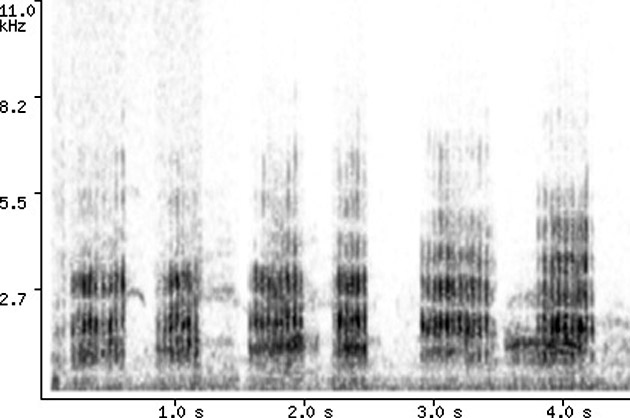Possibly…
Like most herons, the calls of Great Egret are always hoarse, unmusical croaks and groans. There are slight variations, however, and listening to the selection of recordings available at Xeno-canto suggests that there may be consistent differences between the American and Eurasian Great Egrets.
The voice of American birds is relatively soft and moaning, while recordings of Eurasian birds have a slightly more croaking and grating quality. The difference can be heard in recordings and can be seen clearly in sonagrams.
New World recordings
For example, this recording from Tennessee is typical of the American birds:
Another American recording, from Argentina, has a more grating sound:
Old World recordings
While a recording of subspecies alba from Italy is has a considerably rougher or coarser grating sound:
And a recording of subspecies modestus from Malaysia sounds quite different with well-defined and evenly spaced harsh clicks.
Sonagrams
Looking at sonagrams allows us to see the subtle differences. The Old World call is a rapid series of distinct notes – a croak – while the New World call is more of a groan with much less well-defined notes in each call. Sonagrams also reveal a difference in harmonic structure. The American recordings all show a strong band at about 1 kHz and a second strong band at 3-4 kHz. Eurasian birds, on the other hand, show a series of evenly spaced harmonic bands. This is probably not audible in the field, but deserves more study as a difference that might be useful for identifying recorded calls.


This discussion is based on only a few recordings, and may not hold up in a larger sample size, or these may be tendencies that are not reliable enough to identify a bird out of range, but voice certainly warrants more study, and observers should make an effort to record any sounds heard from suspect egrets. ((There are no confirmed records of Old World Great Egrets in North America, but at least three possible records:
- Gibson and Kessel (1997) report “Occurrences in SE and SC Alaska have different timing from those in SW Alaska, pointing to the likelihood that this heron … has reached Alaska from both New World and Old World populations.”
- A Great Egret with mostly dark bill and dark green facial skin was present at Chincoteague, Virginia from May to July 2008, and speculation centered on the African subspecies melanorhyncha.
- A Great Egret with pale yellowish upper legs was present at Nisqually NWR, Washington from fall 2010-Jan 2011. This bird was possibly the Asian subspecies modesta, but aside from the pale leg color no other differences were noted.))


I found a Great Egret with a black bill and bluish green facial skin at Chincoteague NWR in April 2012. It could be the same bird that was seen in 2008. Here is a link to some pictures.
http://www.flickr.com/photos/73831614@N00/sets/72157632517096224/